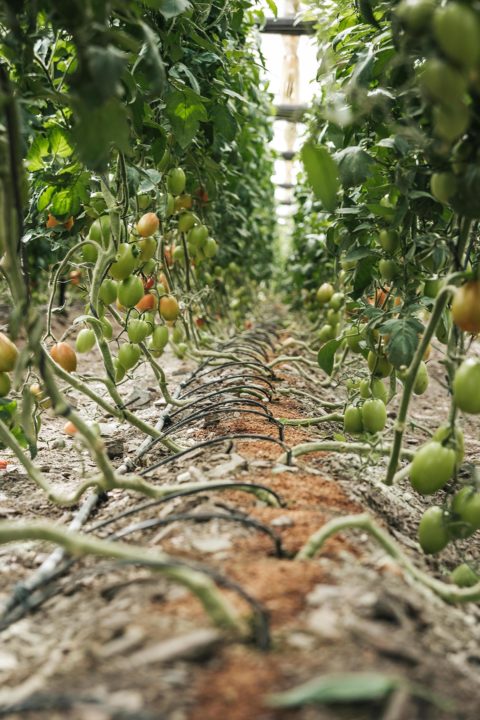Why You Should Be Proactive in Cannabis Production Best Practices
The cannabis industry is in a chaotic compliance position today and could change dramatically if the U.S. government legalizes it. Each state has its own rules about testing, traceability, and use of agricultural chemicals, while other countries have strict current Good Manufacturing Practices (GMPs) rules in place.
Cannabis is not the only industry with colliding regulations from country to country; the produce industry has similar problems; however, within the U.S., it has been standardized by the Food Safety Modernization Act (FSMA), which was passed in 2011. We can forecast that regulations in the cannabis industry will mimic FSMA.
FSMA was created to bring guidelines to the produce food industry pertaining growers, harvesters, transportation, and packagers. Regulators and industry leaders found it is tough to control human pathogens in a process with no kill step; for example, lettuce cannot go through a sterilization or pasteurization step. In response, they developed the Preventive Control Rule (PCR) and Produce Safety Rule (PSR) for the different links in the supply chain with science-based results. In the cannabis industry, there are some facilities that are attempting to use GMP guidelines in the growing process. GMPs are not practical in an active growing process, but rather Good Agriculture Practices (GAPs) are tailored for the grower whether in the field, greenhouse, or indoor.
In relation to FSMA, the Produce Safety Rule is based on GAPs and expanded on them to use science-based controls to minimize human pathogens such as Salmonella, Listeria, and E. coli 0157:H7. There are five principles in PSR that can relate to cannabis growing: 1) water for pre and post-harvest; 2) worker health, hygiene, and training; 3) biological soil amendments; 4) domesticated and wild animals; and 5) equipment, tools, buildings, and sanitation. Each principle can have its own testing requirements on frequency and limits. For example, water used for irrigation will have different testing intervals if sourced from a well or a pond. Keep in mind a reverse osmosis system does not remove microorganisms completely.
Using the five principles in PSR, every step in the production process of fresh produce needs to be analyzed as a potential hazard. This requires the grower to develop a safety plan, creating a standardized repeatable processes or SOPs to ensure a safe product. Companies in the cannabis industry have already created SOPs; however, that is just one part in a safety plan. There is also record keeping, pest control (outside and inside of the facility), crisis management, and transportation controls, to name a few. A company’s safety plan needs to be well developed and tested. Though the PSR covers the growing and handling of fresh produce, in addition to PSRs that cover handling and growing of produce, there are expanded guidelines for processing, packaging, or holding fresh produce.
During packaging and processing of produce, FSMA provides the PC Rule using GMP Hazard Analysis Risk-Based Preventive Control (HARPC) guidelines. These guidelines were modified from Hazard Analysis Critical Control Points (HACCP) because there is not a critical control point in fresh produce. HACCP is typically found in the beverage industry because of a critical control point or “kill point” such as pasteurization during bottling. In today’s production of smokable cannabis, there is not a kill point. In the manufacturing of cannabis products, such as vapes and foods, HACCP or EU-GMPs will need to be in place. However, there needs to be a physical barrier between GAPs ending and GMP starting if operating as a vertically integrated company.
Preventative control points in cannabis post-harvest are a list of steps to lower the risk of contamination. Cleaning and sanitizing all food contact surfaces before and after an operation, wearing hair and beard nets correctly, and dipping tools into Isopropanol are all examples of preventative controls. A process such as the drying of cannabis to lower the water activity below microorganism activity could be considered a preventative control. This type of control also has a quantitative value to show in your records that a task was done correctly for each batch. Having quantitative records will help your company avoid recalls and litigation down the road. In recent news, there was an outbreak of Cyclospora in bagged salad mix. Using packaging, sanitation, and other records will help companies in the supply chain show they were not involved in the outbreak.
Recall plans are imperative to providing guidance you and your company about how to handle a health hazard outbreak. A recall plan consists of a team to evaluate the threat of the hazard to the public and what action is required. Each type of hazard has a different danger level dictating whether the product is salvageable or needs to be destroyed. Not being ready for an outbreak can cause a large economic loss to the company, brand damage, or even bankruptcy.
A cannabis company has already had a recall not too long ago, and the action to recall by the company should be considered a positive action. They were able to detect the hazard and reacted to the problem and their safety plan worked before consumers were affected. Voluntary recalls should be considered a good response to your safety plan; however, the next steps to correct those flaws are essential.
Whether or not FSMA plays a role into the cannabis industry when it becomes federally legal, these well-developed guidelines can play an important part for the industry. A certified safety personnel needs to be hired to facilitate the safety plan or use a third-party company that can help with the development of your safety program. These third-party safety companies can also set up audits to help make sure the safety plan has been developed correctly and make changes when the production and guidelines change. Regulations will change, and it is vital to be ahead of the game.









